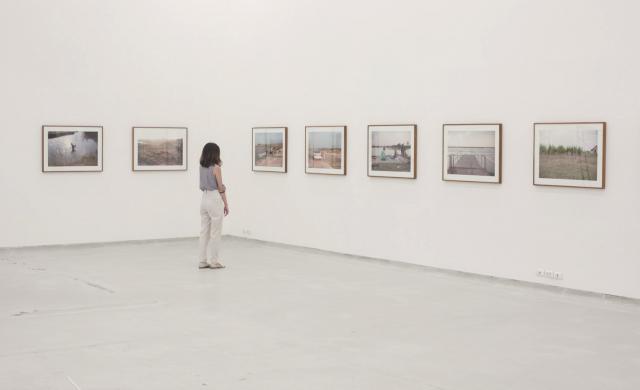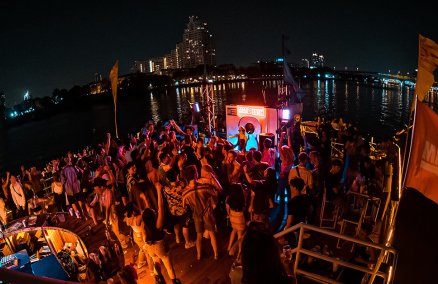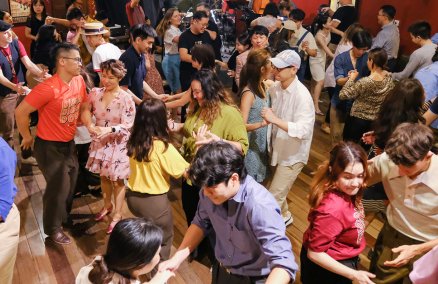Miti Ruangkritya, who you might know for his Imagining Flood series taken back in 2011, was recently named among the emerging photography winners at Magenta Flash Forward and nominated for the Dali Photo Festival’s Best Photographer. His works are on display at two venues this week, at WTF’s Conflicted Visions and the new On the Edge opening this week at Bangkok University Gallery. BK talks with Miti to discuss his two different exhibitions.
Why the name “On the Edge”?
During a tuk tuk trip to survey the outskirts of Siem Reap, a totally touristy city in Cambodia, I was led to this newly-paved motorway far out of the city center. Then at one point the road came to an abrupt end. It was literally a divide between the invaded nature and the urbanization of Siem Reap. That contrast triggered me to explore the context around this quiet deserted area, which was kind of a no man’s land during the daytime but got livelier in the evening with people coming out by the dry fields and the lakes.
The series has a forlorn feeling about it; can you explain why?
It’s by far the series with the most romanticism I’ve done. I intended to employ the soft light in the morning and evening, which comes only at a specific time of day and doesn’t last long. It’s also to do with how the livelihoods and places captured probably won’t be found again the next time we visit, swallowed up by the urban development. This fleetingness has a gentle melancholic appeal to it. Something disappearing in almost the blink of an eye is normal in a developing territory.
That said, we barely see the facial expressions of the people in the photos.
The series was shot with a fixed 50mm lens, which is closest to the normal eye, so it automatically puts more distance. I didn’t look for a response or reaction from the people in the photos. I’m an outsider. It’s like when you’re in a car passing by a scene for a short moment; there’s no interaction. You see them but they don’t acknowledge your existence. We’re like a drifting invisible observer.
Your political series [now displayed as part of WTF’s Conflicted Visions] seems a lot different, though.
The political series isn’t meant to influence or convey an emotion. That’s also why it’s in black and white and has a pretty generic name [Thai Politics III]. It’s a collection which kept expanding since 2006. There’s a worry people may take it personally; it depends on an individual’s background. There’s clearly a lot of emotion involved when it comes to Thai politics. I grew up in the UK, so my view may be more distant. Still, many look at political figures as people, rather than within the concept of politics. The work is not about the two political polars but more about that emotional involvement. The latest series [Thai Politics IV] is a collection of portraits and selfies of good-looking women at protest sites or young men carrying a Thai flag showing their abs. I wondered why I never witnessed them myself; did they just take a snap and leave? It’s as if they did it just to be part of a group, not as a political statement.
Are you working on any projects?
Earlier this year when it was cold and foggy in Bangkok, I photographed green areas in the city, which look out of place in the capital’s landscape. But it’ll take a while before it comes out.















